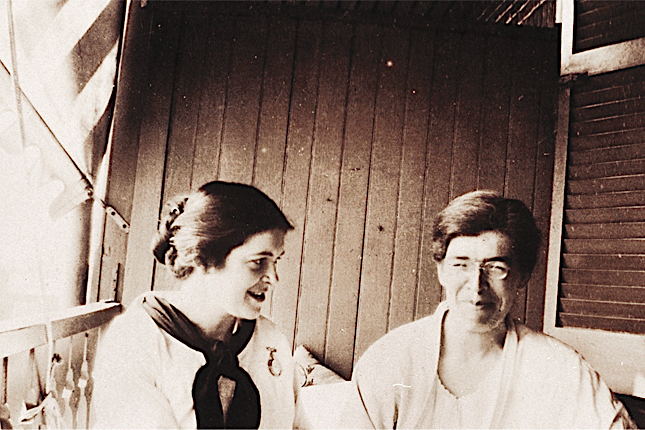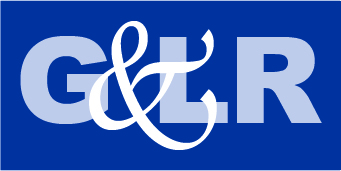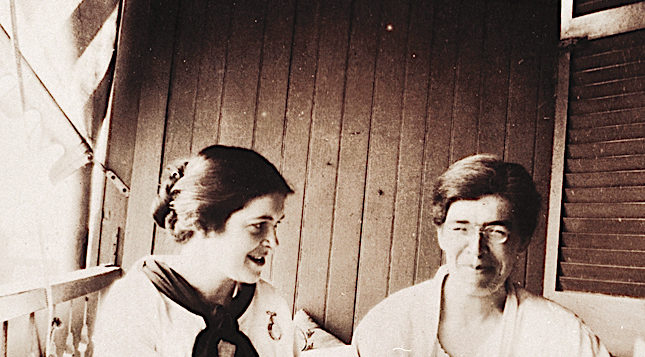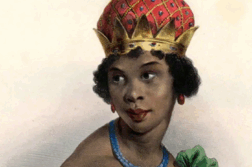DESCRIBED by The New York Post as a “Spinster in Steel,” Martha May Eliot sat down in 1922 and wrote to her mother to tell her that she had found a “two bedroom house, so that there is always a room free for guests.” Eliot was expressing her delight that she and Ethel Collins Dunham had finally found a house to share, and she made no effort to hide the fact that they would be sleeping in the same bed. These two remarkable women, everyone knew, were more than just “friends.”
The prevailing scientific view at the time was that lesbianism, “sexual attraction or sexual activity between women,” was that of “Inversion Theory,” which held that women who suffered from it were born with a “reversal of gender traits.” Pioneering psychiatrist Richard von Krafft-Ebing, an early exponent of this theory, referred to lesbians as “masculine souls heaving in a male bosom.” (He also applied his theory to male “inverts.”)
Inversion theory was certainly a view encountered by Eliot and Dunham as they began their careers. Radclyffe Hall’s The Well of Loneliness would arrive in America in 1928 and be ruled “not obscene” by the New York City Court of Special Sessions on April 19, 1929, and thus fit for publication. Sensational court cases such as this would raise the profile of the issues surrounding sexuality. As lesbians, Eliot and Dunham would experience the effects of this renewed public interest.
One such interested public commentator was Senator James Reed, who would speak openly about the need to address the problem of female “celibates” whose male attributes, he declared, led to the dangerous consequence of their refusal to make babies. Many people in the early 20th century agreed with Reed that lesbians were “accidents of nature,” and such views had a hugely detrimental effect on how they were treated. As late as the 1970s, authors such as Anne Mary Wells, writing about the life of suffragist Mary Emma Woolley, nearly abandoned the project entirely when she found Wells’ love letters to another woman, only publishing when she convinced herself that the women’s relationship was never physical. Thus it’s not surprising, what with the prevalence of such views, that lesbian scientists have often been erased from history.
Lesbians like Dunham and Eliot were considered “endocrine perverts and derailed menopausiacs” in the early 20th century. A number of LGBT people who wanted to explore this hypothesis entered fields of science that could help them to unwrap the “mystery” of their sexual orientation. One such scientist was Howard Brown, a doctor at New York University who was the first physician to publicly announce his homosexuality and would later write that he became a scientist “to solve the riddle of my sexual identity” and to explore the science behind it. For Eliot and Dunham, this was not their motive. They became scientists and doctors for the singular purpose of using the tools of science to improve the health of women and children—a fact that has often been lost due to the notoriety of their personal lives. Both women made important contributions to health care policy and administration, and they were remarkable scientists in their own right.

Eliot and Dunham met in 1910 and would remain together “until death did them part” in 1969. It’s impossible to separate their 59-year relationship from the careers they built, even though they decided early on to guard against allowing their scientific careers to interfere with their personal relationship. They met as undergraduates at Bryn Mawr College. Eliot was nineteen and the daughter of a minister. Dunham was 26 and had already traveled widely before returning to her studies. Eliot was the star of her class and intended to graduate a year earlier than Dunham, but she waited a year so that they could apply to medical school together.
In 1914, with war on the horizon, they both applied to Johns Hopkins Medical School (Harvard having rejected Eliot’s application based on her gender). Eliot was accepted at Johns Hopkins, but when Dunham’s application was rejected, she refused to attend despite “her desperate disappointment,” as she confided to her mother.
Instead, Eliot took a position in Boston, where she was one of that city’s first female physicians. When war broke out, Johns Hopkins’ chair of pediatrics John Howland, who had been impressed by Dunham’s “scientific mind,” accepted her as a pediatric intern. The appointment was a controversial one, and there was no possibility of two women being appointed together, never mind two women in a relationship. Indeed, it was only the shortage of men that made the position available in the first place. Consequently, the two women were separated for a time, so they threw themselves into their training. A year later, Eliot was awarded a pediatric residency at St. Louis Children’s Hospital, while Dunham headed for New Haven, Connecticut.
It was in St. Louis that Eliot became interested in the issue that would be the focus of her professional life: the scientific study of social medicine. She was determined to identify the ways in which social and economic conditions affect public health. Knowing that she needed to observe and apply her research directly to people, she returned to Boston to open a private clinic. In her attempt to reach the kinds of people who needed her help, she encroached on the turf of the established male doctors in the area, who were furious both at the presence of a female doctor and at the very low prices she was charging, often nothing at all. This experience bolstered Eliot’s efforts to develop a real scientific understanding of public healthcare that went beyond anything that was being attempted at this time. It also garnered the attention of several members of the medical establishment, and she was invited to become Yale’s first resident physician in their new pediatric department, which reunited her with Dunham.
The only disadvantage of this prestigious post was that it was a live-in position. However, Eliot was frequently observed sneaking out to eat and sleep with Dunham, a topic of gossip that exposed both women to prejudice and ridicule, adding to the difficulties they faced in gaining the respect of colleagues and funding for their research.
By 1922, Eliot had begun to further focus on studying the childhood disease rickets. In her work as a pediatrician, she had seen this condition with alarming frequency. It was a major cause of pediatric health problems and mortality. Thirty years earlier, scientists had determined that sunlight and proper nutrition had an effect on rickets, and by 1919 Kurt Huldschinsky had shown that the condition could be treated by exposure to ultraviolet light. Dr. R. A. McCollum of the Johns Hopkins School of Public Health and Hygiene, had recently produced rickets in rats and identified the antirachitic compound that would become known as vitamin D. Experimentation on the structure of vitamin D ensued, but what interested Eliot was determining the most suitable method of administering vitamin D, as well as the exact amounts required by infants and children to prevent the disease.
In her laboratory, along with her colleague Dr. Parks, a professor of pediatrics at Johns Hopkins, Eliot continuously assessed and experimented, ultimately developing the “roentgenographic” criteria for the early stages of rickets detection at a time when radiology was in its infancy. Her use of X-rays to detect rickets early in life was considered revolutionary. This information is what allowed her to put together a treatment and prevention plan for rickets. Her work led to the discovery that 400 units of vitamin D a day would protect all infants from the disease. Originally administered through cod liver oil capsules, it soon became apparent that a much easier way was to add the vitamin D to milk. At this time ninety percent of all infants were weaned on cows’ milk, so Eliot’s plan worked brilliantly, effectively eradicating rickets.
The level of funding she received for her scientific research was unusual, but in this instance her sex worked to her advantage. Male doctors historically had tended to feel that child healthcare was beneath them, precisely because child care was considered the domain of women. The fact that Eliot’s research was producing fast and tangible results at a time when infant mortality rates were high translated into public attention as well as generous funding.
The support of her colleagues, notably Dr. Parks, was invaluable, and the respect she earned helped to pave the way for subsequent lesbian physicians. Indeed many of her colleagues were willing to risk their careers to support her. In 1930, Dr. Parks’ support for Eliot resulted in Parks himself being attacked professionally for “supporting embattled feminists,” which seems to have been a euphemism for “lesbians.” In an attack led by Dr. Haven Emerson, Dean of Columbia University, he was forced to defend his position to the Children’s Bureau. Parks always reminded Eliot in his letters to “give his love to Ethel.” He understood exactly what the two women were to each other; he simply didn’t care. It is hard to overestimate the value of such support to Eliot’s burgeoning scientific career, which is what enabled her to counteract the implicitly homophobic system in which she worked.
Dunham’s medical and scientific career in New Haven followed a somewhat similar trajectory. She had been made the first female house officer in the Yale Department of Pediatrics and was made an instructor at the Yale School of Medicine in 1920. Her scientific interests, like Eliot’s, lay in female and child healthcare, but her focus was on improving infant mortality rates and premature babies’ odds of survival.
While at Yale, with the support of the U.S. Children’s Department, she undertook a large scientific study on the “morbidity and mortality” of infants. Much of her research took place “in the field,” where she meticulously observed and recorded patients’ symptoms and responses to treatment before suggesting causation. She was a hands-on researcher who bought a car so that she and her residents could perform home visits to treat and educate mothers and their babies. Ultimately her research led to the identification of premature birth as the leading cause of neonatal death. Her attention then turned to discovering the best treatments for these premature infants. In the words of historian Lillian Faderman, Dunham was “quick to recognize problems and to devise solutions.” Her sense of humor and gentle manner soon made her popular with her colleagues, many of whom—as in Eliot’s case—were willing to accept her personal life and assist her professionally.
At the time, there were few instruments and no specific methodology designed for the treatment of premature infants and newborns, so they were treated with the same equipment as older children. The mortality rate for premature infants at the time was staggering—up to seventy percent, compared to thirty percent for full-term infants, who would die before their first birthday. Dunham’s scientific research helped to change all that through experiments designed to discover the tools needed to better treat these tiny patients.
With their careers riding high, Eliot and Dunham moved to Washington, D.C., in 1935, when Dunham was made chief of child development at the Children’s Bureau, which had been established in 1912 to improve the health of children. Eliot was appointed as assistant chief. The idea of appointing two female “partners” was an issue for many people, and both women initially faced what they later described as “aggressive homophobia.”
Both women continued their scientific studies and fought to help pediatricians gain recognition alongside obstetricians. Their research had determined irrefutably that the science of neonatal healthcare had to be recognized and further explored if infants’ lives were to be saved. Their popular writings and lectures led quickly to the adoption of the measures they established, and their scientific discoveries helped to shape practices and policies in many health districts.
Eliot’s interests expanded by and by, and she spent the latter part of her career campaigning for better health care for the poor. Her research had shown that there was a clear link between survival rates for infants and family income. She sought to redress this economic imbalance by supporting and calling for widespread reform in the distribution and administration of healthcare.
Both women would go on to work for the World Health Organization. Indeed, Eliot was the only woman to sign the WHO constitution, and from 1949 to 1951 Dunham would lead a group of experts in Geneva in their scientific studies regarding the causes of premature birth. These appointments led to the widespread recognition of both women as leaders in the field of medical research. It was, however, a career move they accepted only because it allowed them to be together. Neither partner enjoyed being apart, and indeed their work suffered when they were. Their personal letters when they were not together are littered phrases such as “Dearest, it was hard to say goodbye” and “I miss you, my darling.”
Thus it is unfortunate that neither woman’s obituary mentions their relationship; they are recorded as unmarried spinsters. While their scientific achievements are lauded, their personal lives are systematically omitted. Even so, in their own time society’s harsh judgment of the way they loved failed to stop them from living happily and achieving their scientific potential. Their lesbianism was not incidental, but was central to their success. The two women’s unfailing support for each other was essential to their success as scientists.
It is notoriously difficult to reconstruct the experiences of lesbians from an earlier time, whose lives together are often hidden behind stereotypes of spinster- and widowhood. But with Eliot and Dunham, we’re offered an intriguing glimpse into a scientific collaboration and an openly lesbian relationship. The two women helped to crack open the door toward a general acceptance of LGBT people. The love these two women had for each other endured a lifetime and sustained them through their careers as groundbreaking, life-saving scientists.
[Editor’s note: Today, the Martha Eliot Health Center, part of Children’s Hospital in Boston, continues to honor their achievement.]
Rebecca Batley, a historian and writer, has a particular interest in the art of the late 19th and early 20th centuries.





